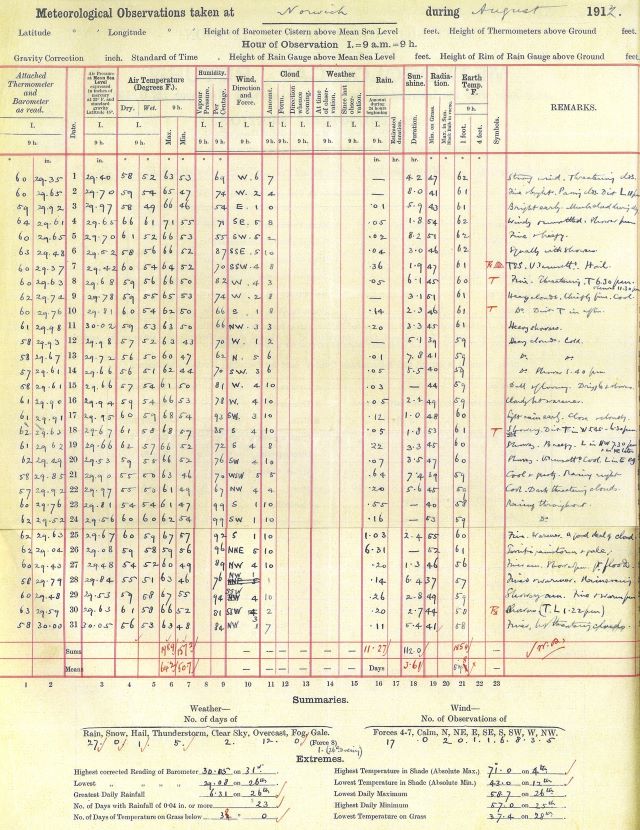Climatological Returns
The climatological returns are monthly forms sent in to the Met Office by observers.
There are more climatological stations than stations producing daily registers because observations were only required once a day at 0900 therefore the site could be operated by a volunteer observer instead of being manned more of the time. Each form contains one month of observations. The forms provide an observation taken at 0900, generally giving temperature, pressure, weather, wind direction and force. The forms will also give daily maximum and minimum temperature, rainfall and, for those sites with the required instrumentation, sunshine totals. Some sites will also provide a brief summary of the weather for each day noting its main characteristics. A number of sites will also provide a reading at 2100 and a few will give more frequent observations. For much of the period covered by the returns the front of each form provides a ‘decode’ which will help you to interpret the observations but outside of this period you may need some assistance. Factsheet 17 ‘Weather Observation on Land’ available on the Met Office website should be able to help you. If you are viewing archive materials at NRS or PRONI it would be advisable to bring a copy of this with you when you visit.

Example page from Climatological returns.
Most useful for
Climatological returns can give a good indication of the weather for a specific location over a longer period of time. One volume of a climatological return can hold a much longer period of observations than the daily register so if you wanted to compare several places over a period of several years these are more practical.
Things to bear in mind
Climatological returns are often in large and heavy volumes. It may not be practical to provide too many in a reading room at any one time. The earliest Scottish returns have been digitised for preservation purposes (the originals are too fragile to handle) and you will not be able to view the originals.





